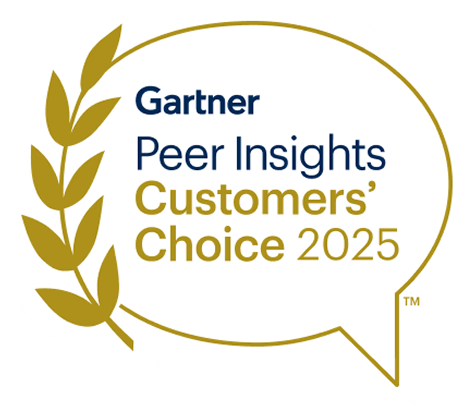Key Practices for Responding to Compliance Framework Updates
Most privacy, IT, and security teams know the pain of keeping up with ever-changing data compliance regulations. Because data security and privacy-related regulations change rapidly over time, it can often feel like a game of “whack a mole” for organizations to keep up. Plus, in order to adhere to compliance regulations, organizations must know which data is sensitive and where it resides. This can be difficult, as data in the typical enterprise is spread across multiple cloud environments, on premises stores, SaaS applications, and more. Not to mention that this data is constantly changing and moving.
While meeting a long list of constantly evolving data compliance regulations can seem daunting, there are effective ways to set a foundation for success. By starting with data security and hygiene best practices, your business can better meet existing compliance requirements and prepare for any future changes.
Recent Updates to Common Data Compliance Frameworks
The average organization comes into contact with several voluntary and mandatory compliance frameworks related to security and privacy. Here’s an overview of the most common ones and how they have changed in the past few years:
Payment Card Industry Data Security Standard (PCI DSS)
What it is: PCI DSS is a set of over 500 requirements for strengthening security controls around payment cardholder data.
Recent changes to this framework: In March 2022, the PCI Security Standards Council announced PCI DSS version 4.0. It officially went into effect in Q1 2024. This newest version has notably stricter standards for defining which accounts can access environments containing cardholder data and authenticating these users with multi-factor authentication and stronger passwords. This update means organizations must know where their sensitive data resides and who can access it.
U.S. Securities and Exchange Commission (SEC) 4-Day Disclosure Requirement
What it is: The SEC’s 4-day disclosure requirement is a rule that requires more established SEC registrants to disclose a known cybersecurity incident within four business days of its discovery.
Recent changes to this framework: The SEC released this disclosure rule in December 2023. Several Fortune 500 organizations had to disclose cybersecurity incidents, including a description of the nature, scope, and timing of the incident. Additionally, the SEC requires that the affected organization release which assets were impacted by the incident. This new requirement significantly increases the implications of a cyber event, as organizations risk more reputational damage and customer churn when an incident happens.
In addition, the SEC will require smaller reporting companies to comply with these breach disclosure rules in June 2024. In other words, these smaller companies will need to adhere to the same breach disclosure protocols as their larger counterparts.
Health Insurance Portability and Accountability Act (HIPAA)
What it is: HIPPA safeguards that protect patient information through stringent disclosure and privacy standards.
Recent changes to this framework: Updated HIPAA guidelines have been released recently, including voluntary cybersecurity performance goals created by the U.S. Department of Health and Human Services (HHS). These recommendations focus on data security best practices such as strengthening access controls, implementing incident planning and preparedness, using strong encryption, conducting asset inventory, and more. Meeting these recommendations strengthens an organization’s ability to adhere to HIPAA, specifically protecting electronic protected health information (ePHI).
General Data Protection Regulation (GDPR) and EU-US Data Privacy Framework
What it is: GDPR is a robust data privacy framework in the European Union. The EU-US Data Privacy Framework (DPF) adds a mechanism that enables participating organizations to meet the EU requirements for transferring personal data to third countries.
Recent changes to this framework: The GDPR continues to evolve as new data privacy challenges arise. Recent changes include the EU-U.S. Data Privacy framework, enacted in July 2023. This new framework requires that participating organizations significantly limit how they use personal data and inform individuals about their data processing procedures. These new requirements mean organizations must understand where and how they use EU user data.
National Institute of Standards and Technology (NIST) Cybersecurity Framework
What it is: NIST is a voluntary guideline that provides recommendations to organizations for managing cybersecurity risk. However, companies that do business with or a part of the U.S. government, including agencies and contractors, are required to comply with NIST.
Recent changes to this framework: NIST recently released its 2.0 version. Changes include a new core function, “govern,” which brings in more leadership oversight. It also highlights supply chain security and executing more impactful cyber incident responses. Teams must focus on gaining complete visibility into their data so leaders can fully understand and manage risk.
ISO/IEC 27001:2022
What it is: ISO/IEC 27001 is a certification that requires businesses to achieve a level of information security standards.
Recent changes to this framework: ISO 27001 was revised in 2022. While this addendum consolidated many of the controls listed in the previous version, it also added 11 brand-new ones, such as data leakage protection, monitoring activities, data masking, and configuration management. Again, these additions highlight the importance of understanding where and how data gets used so businesses can better protect it.
California Consumer Privacy Act (CCPA)
What it is: CCPA is a set of mandatory regulations for protecting the data privacy of California residents.
Recent changes to this framework: The CCPA was amended in 2023 with the California Privacy Rights Act (CPRA). This new edition includes new data rights, such as consumers’ rights to correct inaccurate personal information and limit the use of their personal information. As a result, businesses must have a stronger grasp on how their CA users’ data is stored and used across the organization.
2024 FTC Mandates
What it is: The Federal Trade Commission (FTC)’s new mandates require some businesses to disclose data breaches to the FTC as soon as possible — no later than 30 days after the breach is discovered.
Recent changes to this framework: The first of these new data breach reporting rules is the Standards for Safeguarding Customer Information (Safeguards Rule) which took effect in May 2024. The Safeguards Rule puts disclosure requirements on non-banking financial institutions and financial institutions that aren’t required to register with the SEC (e.g, mortgage brokers, payday lenders, and vehicle dealers).
Key Data Practices for Meeting Compliance
These frameworks are just a portion of the ever-changing compliance and regulatory requirements that businesses must meet today. Ultimately, it all goes back to strong data security and hygiene: knowing where your data resides, who has access to it, and which controls are protecting it.
To gain visibility into all of these areas, businesses must operationalize the following actions throughout their entire data estate:
- Discover data in both known and unknown (shadow) data stores.
- Accurately classify and organize discovered data so they can adequately protect their most sensitive assets.
- Monitor and track access keys and user identities to enforce least privilege access and to limit third-party vendor access to sensitive data.
- Detect and alert on risky data movement and suspect activity to gain early warning into potential breaches.
Sentra enables organizations to meet data compliance requirements with data security posture management (DSPM) and data access governance (DAG) that travel with your data. We help organizations gain a clear view of all sensitive data, identify compliance gaps for fast resolution, and easily provide evidence of regulatory controls in framework-specific reports.
Find out how Sentra can help your business achieve data and privacy compliance requirements.
If you want to learn more, request a demo with our data security experts.










.webp)



